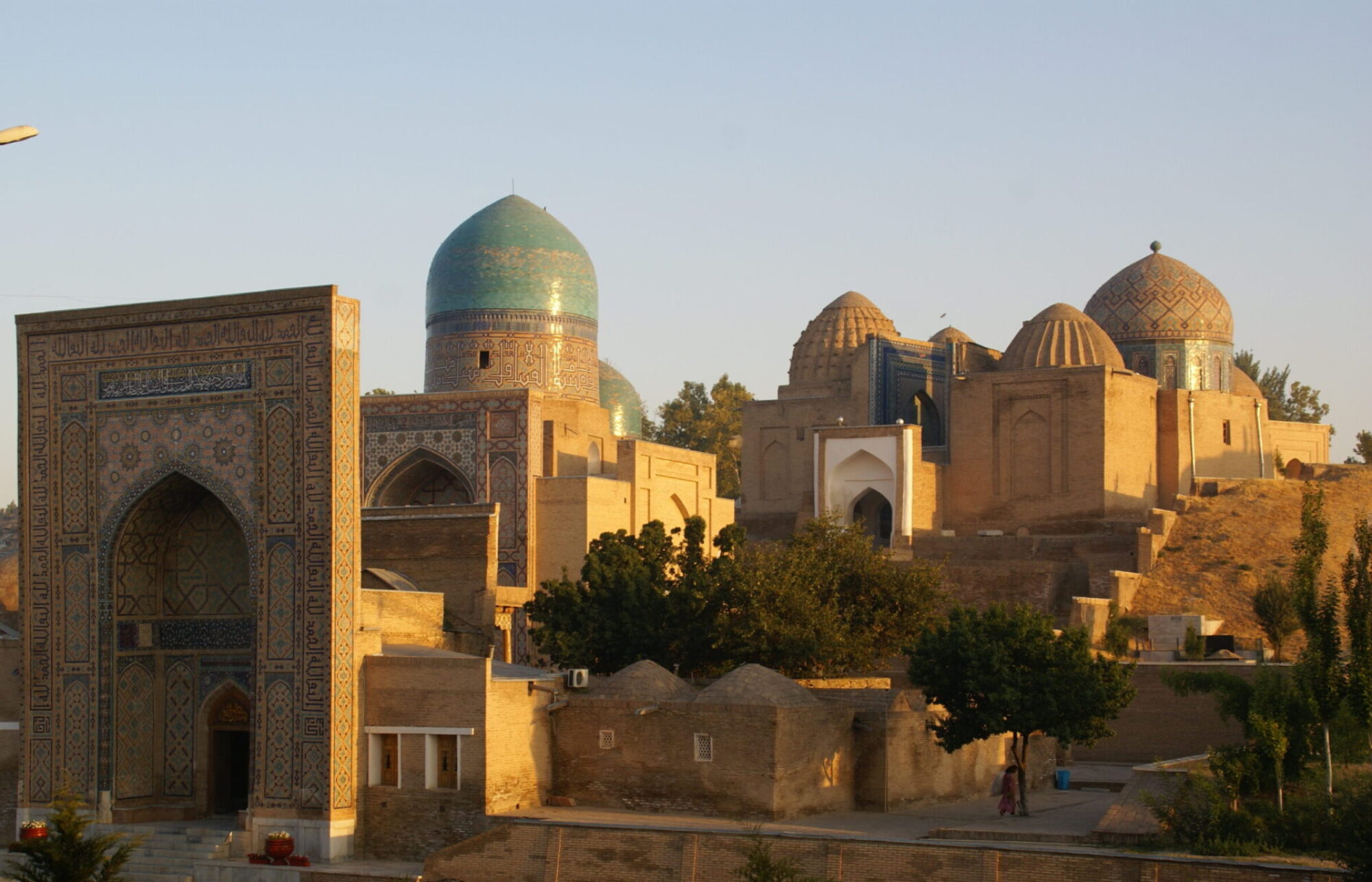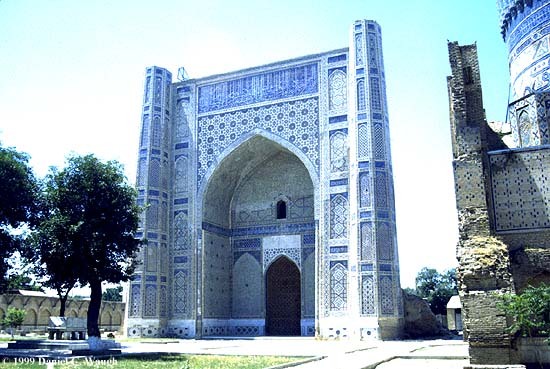The Bibi Khanum Congregational Mosque (1398– 1405) was conceived as the most significant architectural expression of Timur’s rule. The mosque was the most ambitious building project initiated during his lifetime and can be visited today in a 20th-century restoration. It is very likely that the construction was never completed, which can explain the dilapidated state of the monument at the end of the 19th century. At the nadir of its decay, it had been reduced to a core of the main sanctuary, its dome having collapsed and the iwan (monumental gate) of its façade reduced to a perilously suspended fragment. The small northern and southern mosques facing on the large open courtyard were also in ruins and without their domes. Of the huge entrance iwan only the side pillars remained. Nothing was left of the domed galleries that connected all these elements; only the north-western minaret had survived.
The Bibi Khanum Mosque was comprehensively studied by Shalva E. Ratiia in the 1940s. Ratiia drew up the first restoration plans based on its ruins and produced reconstruction watercolours. The renowned Soviet archaeologist and architect Galina A. Pugachenkova finalized the restoration plans for the mosque at the beginning of the 1950s. Further archaeological research was performed by Liia Iu. Man’kovskaia in 1967. After 1974 the restoration project was led by the architect Konstantin S. Kriukov, one of the most influential restorers in the Soviet period, who initiated the replacement of all brick loadbearing structures with reinforced concrete frames. Throughout the 1980s and 1990s the collapsed domes of the side mosques were rebuilt with reinforced concrete and new tiling was inserted along the domes’ ribbed outer shells. After 1985 the main sanctuary was adorned with massive pylons, decorated in mass-produced tiles. By the end of the 1990s the epigraphic programmes were executed anew.
During the urban regeneration of Samarqand prior to the 2007 celebrations of the city’s 2750th anniversary, the whole square between the Bibi Khanum Mosque and the Bibi Khanum Mausoleum (early 15th century) was completely refurbished. In 2005–6, the octagonal mausoleum, which had been reduced to ruins, was adorned with a new pseudo-Timurid dome on a high drum and rebuilt facades with arched portals. The outer wall of the Bibi Khanum Madrasa was built up above ground level with modern brick to replicate the presumed position of the original guldasta (corner towers). Although no traces of the madrasa remain, Soviet scholars have stylistically compared it to the Ulugh Beg Madrasa on Registan Square.


